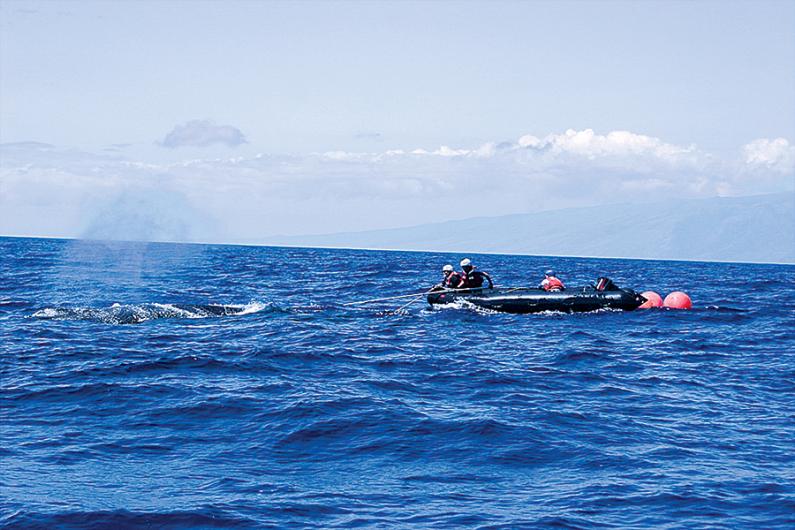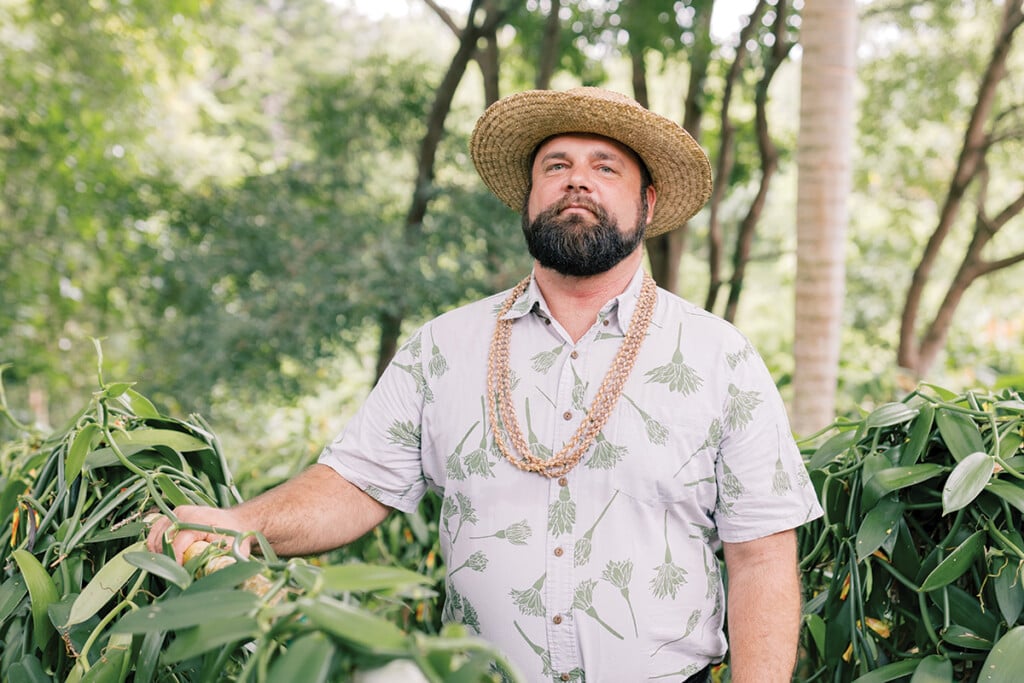Sightseeing saviors: Whale watch tour boats on Maui rescue entangled humpbacks
Whale watch tour boats are playing a critical role in helping rescue entangled humpbacks during Hawaii’s annual whale season.

Ed Lyman teaches his crew not to get emotionally attached to the whales they help rescue. But during last year’s Hawaii whale season, when a weeks-old humpback calf was spotted in waters off Lahaina with a rope wrapped around its head, even Lyman had to break his own rule.
The large whale entanglement response coordinator for the National Oceanic and Atmospheric Administration’s (NOAA’s) Hawaiian Islands Humpback Whale National Marine Sanctuary, Lyman, with his team, raced to the sanctuary’s response boat. Just a year earlier, he’d responded to a similar case, staging a multi-day attempt to free an entangled calf but ultimately failing. Lyman was looking for a save this time out.
Even at high gear, Lyman knew it would take several hours for his team to traverse the multiple miles of West Maui coastline from Maalaea to Lahaina—especially since they were required to travel at whale-safe speeds in waters teeming with the massive marine mammals. Fortunately, Lyman already had a team of volunteers at the scene, working in shifts to keep the 15-foot infant humpback within sight until help arrived. The band of saviors were fielded from an unexpected source: the crews of several Maui whale watch tour boats.
Throughout the state—and especially in the famously whale-enticing waters encircled by Maui, Molokai and Lanai— tour boats are increasingly taking on a critical role in efforts to rescue entangled humpback whales and study the marine debris that threatens their lives. The boats are often the first to spot and report whales in distress. With guidance from Lyman and his sanctuary team, the boats also work together to stay with the animals until rescuers can get to the scene. The tour operators even help search for whales that get away from rescuers attempting to disentangle them.
“Who better to find a whale than somebody who’s already looking for them?” asks Lyman, rhetorically. “It’s made a big difference.”
Lee James, owner of Lahaina-based tour operator Ultimate Whale Watch, believed humpback entanglement response so critical, he dedicated one of his boats to the effort.
“It’s just giving back to the whales,” he says. “It gives us all more of a sense of purpose. We want to be involved and to help.”
“One by one, we [tour operators] all started pitching in,” says Kihei-based Seafire Charters owner Don Burns, crediting Lyman’s industry-focused whale entanglement classes with helping them know what to do when encountering the large mammals in distress.
When responding to an entanglement, Seafire’s crew will remain near the humpback, even working in shifts if it’s a long wait, until Lyman’s NOAA team arrives. The tour boat operators never approach the whale or try to remove the debris themselves.
“We let them handle it,” says Burns of Lyman’s rescue crew. “They’re the experts.” The opportunity to watch a whale as it is cut free is “pretty awesome. They seem to breathe a little easier … and off they go.”
Ultimate Whale Watch’s James says that being on the scene for the final cut and release is all the reward he requires—or wants—for the effort.
“When all the debris clears off the whale, you can see how happy the whale is by the way it takes off and moves,” explains James.

Exactly how many North Pacific humpbacks make the 3,000-mile journey from Alaska to Hawaii each winter to mate, birth and nurse their calves in our warmer waters is unknown. Conservative estimates, however, point to around 10,000 to 12,000 arriving annually during Hawaii’s whale season, between December and May. During the peak humpback viewing months of January through March, dozens of tour operators take thousands of visitors into Hawai‘i’s offshore waters multiple times a day creating a substantial whale watching force for NOAA rescuers.
As Lyman and his team raced up the West Maui coastline to the entangled baby whale last year, vigilant tour operators on the scene, three miles offshore of Lahaina, warned that the calf’s mother was being protective and that a male escort whale was nearby. Upon reaching the entangled calf, Lyman assessed the situation.
The rope wrapped just behind the blowhole of the young, still-growing baby whale had begun constricting its body. The larger whales seemed to be attempting to protect the calf from the boats. And the infant whale was surfacing for short breaths and quickly disappearing beneath the water again. By nightfall, after hours of rescue attempts, Lyman had lost sight of the whales.
Whale entanglement is caused by a variety of marine debris—ropes, floats and fishing lines, among them—and can happen “anywhere and everywhere” on the ocean, says Lyman. He and other experts, however, suspect that most entanglements occur at higher latitudes where both whales and fishermen converge on abundant food sources.
“The logic is, there’s just more stuff in the water up there,” says Lyman.
Increasing his knowledge of how whale entanglements happen and where marine debris comes from is the main goal of Lyman’s work. While freeing an entangled whale is an accomplishment, rescuing the animals one-by-one is not an effective way of addressing the problem. Lyman hopes his research will gather more information, ultimately preventing entanglements from happening at all—for example, via safer fishing gear and changing some fishing practices.
His continuing research is one of the reasons why Lyman tries not to allow emotion to sway his response to a whale in distress.
Says Lyman, “Maybe we can’t always cut the whale free. But [through research] we can gain some information. Who? What? When? Why? How?”
A few days after losing sight of the West Maui whales and failing his first attempt at freeing the entangled calf, a call from a tour boat operator set Lyman’s pulse racing. Both calf and mother had been spotted again, this time off Hulopoe Bay on Lāna‘i’s south coast and without a male humpback present.
Tour boats kept watch on the whales as Lyman and his team hurried to the scene. Conditions were clear, and the whales calm. Even the mother whale proved cooperative, at one point seeming to nudge her baby toward Lyman’s boat.
Lyman got his blade into position and leaned over the side of the boat. When the calf rose to the surface for a breath, Lyman moved in, slicing through the ropes in just two cuts. With a snap, the lines and debris fell away, disappearing into the ocean.
Lyman had missed his chance to collect and study the debris, but for once, as his held-back emotions got the best of him, he didn’t mind.
“I had a big grin on my face after we cut it free, and I usually don’t get that way,” he says. “For a whole month after that, we were getting reports of this calf playing, breaching [and] frolicking. A very happy ending.”


